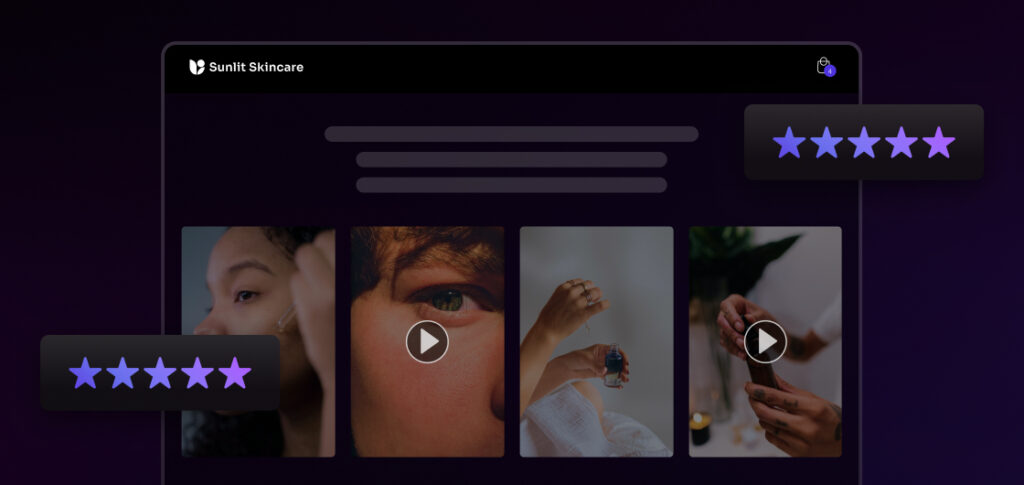
- Customer Marketing
- Reviews and UGC
- Social Proof
How To Add Social Proof on Shopify
Katie Vaught | Apr 25, 2025
Nov 23, 2021 | 7 minute read

Matt Goodman
Co-founder, CEO
People love incentives. And there is research to back up this claim:
Yet, many ecommerce stores offer little to no extra incentives to get new customers, retain current ones, or get customers to perform desired actions. If yours is one of them, keep reading because…
In this article, you’ll discover the 5 customer incentives that’ll uplift your ecommerce brand almost overnight.
Customer incentives are rewards (points, coupons, discounts, freebies, etc.) brands give customers for completing brand-building activities.
You’ll find what kind of activities you can assign your customers and incentives for completing them below.
The average consumer reads 10 online reviews before making a purchase decision, according to BrightLocal research. Another study found 72% of potential customers won’t make a buying decision until they see a review.
Meaning, user reviews are at the core of the consumer decision-making process. If your product pages and business don’t have user reviews, you’re leaving a lot of money on the table.
So, how do you collect user reviews?
Many big businesses use affiliate and referral programs to grow their customer base. In other words, they incentivize customers to bring more customers.
If you aren’t already doing so, here’s a statistic that will change your mind: 92% of consumers say they trust earned media, such as word of mouth from friends and family, above all other advertising forms. And running an affiliate program is one of the best word-of-mouth marketing strategies.
To run an affiliate program, you just need to follow two steps:
If you have reviews on your product pages and someone (say, an affiliate) has invited a potential new customer, the potential customer will be aware of and trust your product(s). They are almost sold on it; they just need a little extra push to make the purchase decision.
The first-time incentive is that extra push.
“Very few shoppers expect to pay full price for products and services when purchased online. With so many retailers now offering new customer discounts and digital coupons, it’s likely a coupon code exists to apply towards your next online purchase.” – Bigcommerce.
To convert new potential customers:
Quick tip: Use Scarcity (example: only N coupons remaining) and Urgency (example: coupon expires in X hours) to increase conversions.
As mentioned previously, 42% of your loyal customers will buy from a competitor if you don’t offer rewards, so incentivizing customers for being loyal is not an option but a must.
You can install a loyalty program and offer rewards such as:
Here, too, you can use scarcity and urgency to get customers to buy more and frequently. Meaning, not only does a loyalty program keep customers from leaving, but it also increases Customer Lifetime Value (LTV).
User-generated content (UGC) is any content (text, images, videos, recommendations, reviews) generated by actual product users instead of the brand.
It often is more natural-looking and trustworthy than brand-generated content because a professional copywriter hasn’t written the copy or a photographer hasn’t taken the photo under perfect lighting.
Even statistics prove it:
84% of millennials report that UGC from strangers has at least some influence on what they buy.
71% of consumers agree that customer reviews make them more comfortable buying a product
Ads based on user-generated content receive 4x higher CTR and a 50% drop in CPC than average ads.
In short, the more content your users generate, the more it helps your ecommerce brand — and incentivizing users to generate content is the quickest way to get UGC in quantity.
I already mentioned that Okendo helps you collect reviews, photos, and videos from users. Well, that’s all UGC, and the customer incentives I stated there apply here as well — coupons, loyalty points, a percentage discount, and limited-time discount on upsell products.

Side note: You can directly share all the UGC generated using Okendo on Facebook, Instagram, Google search, Google Shopping, and more.
Besides, you can also incentivize customers to share their experience with your product on social media (research shows that 52% of online brand discovery takes place on social media).
For example, you can give an exclusive coupon to people who post your product-related content on Instagram and tag you or use your brand hashtag.
Quick tip: Reshare the best UGC pieces on your social feeds and display them on your website for social proof.
Giving customers incentives to boost your brand is the most straightforward way to ecommerce growth. In this article, I shared about offering customers incentives to:
Hopefully, these customer incentives will take your online store to the next level.
Juhil is a freelance writer and the Head of Content for Social Snowball – an automated affiliate marketing app for Shopify. When he’s not busy writing, reading, or thinking about the next great piece for the Social Snowball Blog, you can find him moving knights and bishops on Chess.com.
Related articles
Ready to learn more?